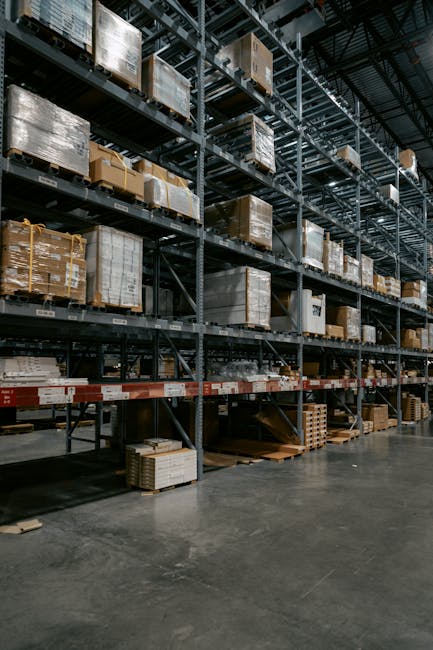Failure Analysis Laboratory: A Comprehensive Guide
A failure analysis laboratory is a specialized facility that conducts thorough investigations to identify the root causes of failures in materials, components, and systems. The primary goal of a failure analysis laboratory is to provide valuable insights and recommendations to prevent future failures, improve product reliability, and enhance overall performance.
What is a Failure Analysis Laboratory?
A failure analysis laboratory is a dedicated facility that uses advanced techniques and equipment to analyze and investigate failed components, materials, and systems. The laboratory is staffed by experienced professionals who possess expertise in materials science, mechanical engineering, and other relevant fields.
Types of Failure Analysis Laboratory Services:
1. Materials Failure Analysis: This service involves analyzing the properties and behavior of materials to identify the causes of failure.
2. Component Failure Analysis: This service focuses on analyzing the performance and behavior of individual components to identify the causes of failure.
3. System Failure Analysis: This service involves analyzing the performance and behavior of entire systems to identify the causes of failure.
4. Root Cause Analysis: This service involves identifying the underlying causes of failure, rather than just the symptoms.
5. Failure Prevention and Mitigation: This service involves providing recommendations to prevent future failures and mitigate the impact of failures.
Failure Analysis Laboratory Equipment and Techniques:
1. Microscopy: Various types of microscopy, including optical, scanning electron, and transmission electron microscopy, are used to examine the surface and internal structure of failed components.
2. Chemical Analysis: Various chemical analysis techniques, including spectroscopy, chromatography, and titration, are used to identify the chemical composition of failed components.
3. Mechanical Testing: Various mechanical testing techniques, including tensile, compressive, and fatigue testing, are used to evaluate the mechanical properties of failed components.
4. Non-Destructive Testing: Various non-destructive testing techniques, including ultrasonic, radiographic, and acoustic emission testing, are used to evaluate the internal structure and properties of failed components without causing damage.
5. Computer-Aided Design (CAD) and Finite Element Analysis (FEA): CAD and FEA are used to simulate the behavior of failed components and systems, allowing for the identification of potential failure modes and the development of design improvements.
Benefits of a Failure Analysis Laboratory:
1. Improved Product Reliability: By identifying and addressing the root causes of failures, manufacturers can improve the reliability of their products.
2. Reduced Costs: By preventing failures and reducing the need for costly repairs and replacements, manufacturers can reduce their costs.
3. Enhanced Customer Satisfaction: By providing high-quality products that meet customer expectations, manufacturers can enhance customer satisfaction.
4. Competitive Advantage: By being able to identify and address failures quickly and effectively, manufacturers can gain a competitive advantage in their market.
5. Regulatory Compliance: By conducting thorough failure analysis and providing recommendations for improvement, manufacturers can ensure compliance with regulatory requirements.
Conclusion
A failure analysis laboratory is a valuable resource for manufacturers, providing a comprehensive and systematic approach to identifying and addressing the root causes of failures. By leveraging advanced equipment and techniques, failure analysis laboratories can provide valuable insights and recommendations to improve product reliability, reduce costs, and enhance customer satisfaction.Failure Analysis Laboratory: A Comprehensive Guide
A failure analysis laboratory is a specialized facility that conducts thorough investigations to identify the root causes of failures in materials, components, and systems. The primary goal of a failure analysis laboratory is to provide valuable insights and recommendations to prevent future failures, improve product reliability, and enhance overall performance.
What is a Failure Analysis Laboratory?
A failure analysis laboratory is a dedicated facility that uses advanced techniques and equipment to analyze and investigate failed components, materials, and systems. The laboratory is staffed by experienced professionals who possess expertise in materials science, mechanical engineering, and other relevant fields.
Types of Failure Analysis Laboratory Services:
1. Materials Failure Analysis: This service involves analyzing the properties and behavior of materials to identify the causes of failure.
2. Component Failure Analysis: This service focuses on analyzing the performance and behavior of individual components to identify the causes of failure.
3. System Failure Analysis: This service involves analyzing the performance and behavior of entire systems to identify the causes of failure.
4. Root Cause Analysis: This service involves identifying the underlying causes of failure, rather than just the symptoms.
5. Failure Prevention and Mitigation: This service involves providing recommendations to prevent future failures and mitigate the impact of failures.
Failure Analysis Laboratory Equipment and Techniques:
1. Microscopy: Various types of microscopy, including optical, scanning electron, and transmission electron microscopy, are used to examine the surface and internal structure of failed components.
2. Chemical Analysis: Various chemical analysis techniques, including spectroscopy, chromatography, and titration, are used to identify the chemical composition of failed components.
3. Mechanical Testing: Various mechanical testing techniques, including tensile, compressive, and fatigue testing, are used to evaluate the mechanical properties of failed components.
4. Non-Destructive Testing: Various non-destructive testing techniques, including ultrasonic, radiographic, and acoustic emission testing, are used to evaluate the internal structure and properties of failed components without causing damage.
5. Computer-Aided Design (CAD) and Finite Element Analysis (FEA): CAD and FEA are used to simulate the behavior of failed components and systems, allowing for the identification of potential failure modes and the development of design improvements.
Benefits of a Failure Analysis Laboratory:
1. Improved Product Reliability: By identifying and addressing the root causes of failures, manufacturers can improve the reliability of their products.
2. Reduced Costs: By preventing failures and reducing the need for costly repairs and replacements, manufacturers can reduce their costs.
3. Enhanced Customer Satisfaction: By providing high-quality products that meet customer expectations, manufacturers can enhance customer satisfaction.
4. Competitive Advantage: By being able to identify and address failures quickly and effectively, manufacturers can gain a competitive advantage in their market.
5. Regulatory Compliance: By conducting thorough failure analysis and providing recommendations for improvement, manufacturers can ensure compliance with regulatory requirements.
Conclusion
A failure analysis laboratory is a valuable resource for manufacturers, providing a comprehensive and systematic approach to identifying and addressing the root causes of failures. By leveraging advanced equipment and techniques, failure analysis laboratories can provide valuable insights and recommendations to improve product reliability, reduce costs, and enhance customer satisfaction.
 The Importance of Proper Storage Racks in Atlanta, GA
The Importance of Proper Storage Racks in Atlanta, GA